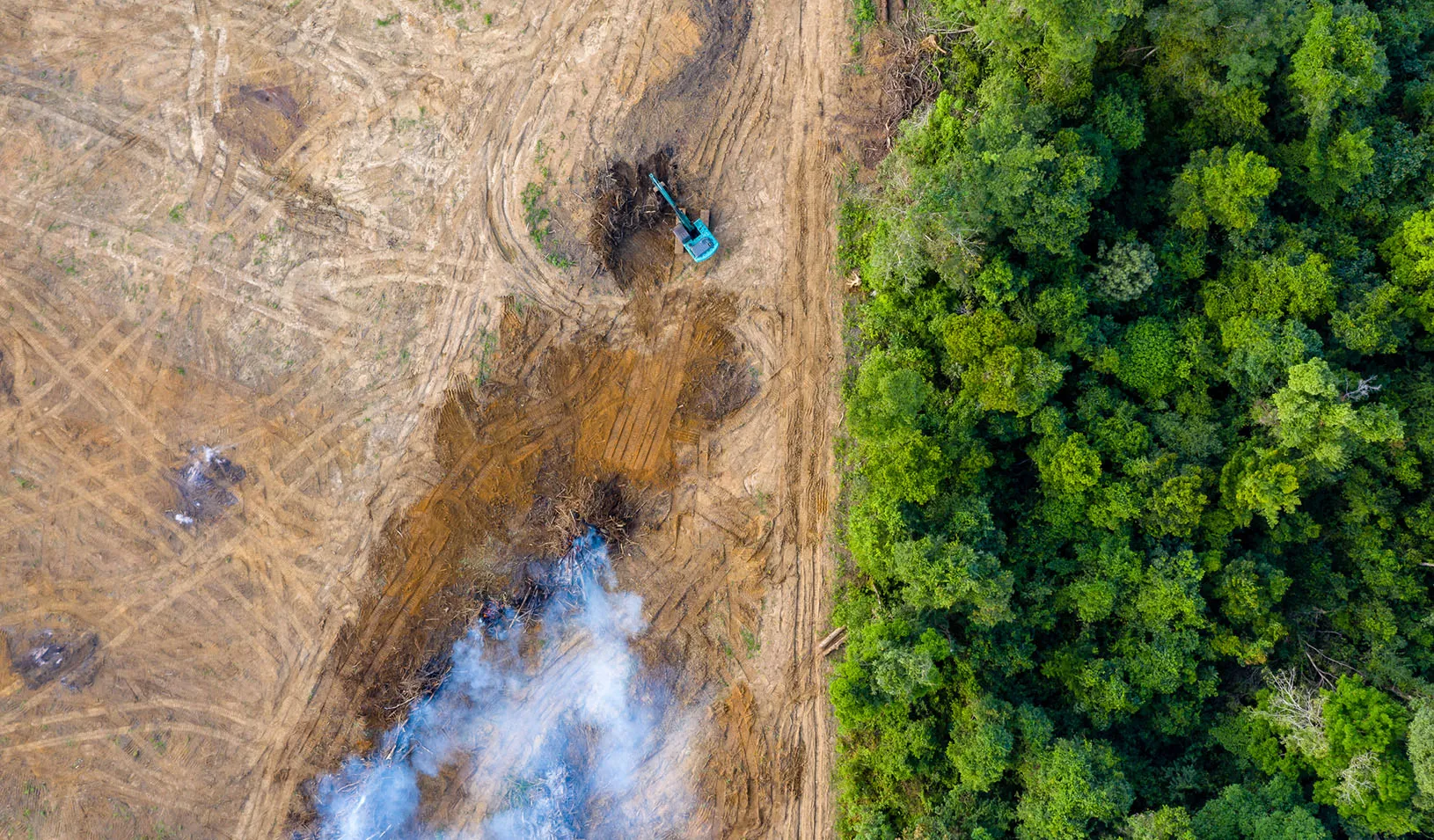Bård Harstad tells his students that every environmental problem is, at its core, an inefficiency problem. “This inefficiency means that, overall, you’re losing something,” he explains. “It means that there is another way to make decisions so that we could potentially all be better off.”
Harstad, a professor of political economy at Stanford Graduate School of Business, has spent much of his career as an economist trying to find more efficient ways to conserve natural resources and slow climate change. His objective, he says, “is to study what are reasonable, effective ways to set economic policies to solve environmental problems — that also take into account political obstacles — so that you can find solutions that are not only efficient but also politically feasible.”
Harstad’s most recent paper explores the political and economic factors that lead governments to either conserve or exploit finite resources like rainforests or oil reserves. In developing a new model to analyze these scenarios, Harstad uncovered a phenomenon that he calls “the conservation multiplier,” which shows how a slight change in the future benefit of conservation or exploitation can dramatically affect current policy.
“The analysis can be used to explain inefficiently high resource extraction rates, but more importantly, it shows how the world community can be more successful in motivating a government to conserve,” Harstad says.
To Exploit, or Not to Exploit?
Harstad says that he originally wanted to become an engineer in the renewable energy sector. Yet as he learned more about the world’s unfolding environmental crises, he realized that the roadblocks preventing society from addressing these problems aren’t technological. They’re political.
Established economic models focus on finding the optimal way for a government to extract a natural resource over time and tend to assume that leaders act in the long-term interests of their countries. But, Harstad says, “That kind of traditional model has some shortcomings.” For instance, it doesn’t consider the effects of high political turnover. If a decision-maker fears they are about to lose power, “they might think that they have a once-in-a-lifetime opportunity to extract the resource,” leading them to use it up more quickly.
His new model takes into account the messy political realities that affect resource policies, such as the benefit a party in power gets from extracting a resource, which may vary based on corruption levels or systems of checks and balances. It also considers predictions about the future, such as how likely a governing party is to stay in power and how reliable payments from conservation interests may be.
All of these factors play into the conservation multiplier. For example, suppose the current government of a country with a tropical rainforest believes that the agriculture lobby will pay a future government to allow beef producers to slash and burn the forest. In that case, the government will be more likely to exploit the resource. It will be gone soon anyway, the reasoning goes, so why not reap the benefits now? In this scenario, the likelihood of exploitation in the future causes an increase in exploitation today. “As soon as the government fears that the lobby will pay for exploitation in the future, it becomes attractive to exploit now,” says Harstad, “and suddenly we have a domino, or multiplier, effect.”
The analysis can be used to explain inefficiently high resource extraction rates, but more importantly, it shows how the world community can be more successful in motivating a government to conserve. – Bård Harstad
Harstad performed an illustrative calibration of his model using data from Brazil over the past two decades. Looking at the country’s politics and deforestation rates, Harstad calculated a conservation multiplier of around 2. This means that if the country’s powerful farming interests are expected to raise the rate of future deforestation by a certain amount, current deforestation rates will increase by twice that amount.
Harstad points to Ecuador as an example of how the conservation multiplier can factor into a government’s desire to extract a resource, even when it’s unpopular. In August, Ecuador held a nationwide referendum on oil production in certain areas of Yasuní National Park, which is part of the Amazon rainforest. President Guillermo Lasso advocated for more drilling, but Ecuadorians voted to halt production. According to Harstad, “the multiplier that arises in the extraction game between governments means that the resource is extracted faster than voters like. If the voters could decide, they would prefer to conserve more often than what the incumbent government would like.”
The multiplier can also work in favor of conservation, depending on the circumstances. A government is more likely to conserve if it is paid to do so. This is the logic behind conservation efforts such as the United Nations’ REDD+ (Reducing Emissions from Deforestation and Forest Degradation in Developing Countries) program, which has paid developing countries more than $3 billion since 2013 to leave their forests intact. Reliable conservation payments can have a multiplier effect on conservation today since a country’s current government expects that future governments will also have an incentive to conserve.
Who Pays for Conservation?
Harstad had an intuitive understanding of how the threat of future exploitation could unravel present-day conservation goals when, about five years ago, he set out to develop the model described in his new paper. He says that developing it disciplined his thinking, forcing him to consider how a wide array of factors play into questions of conservation. It confirmed his intuition about the conservation multiplier and served as a “stepping stone,” allowing him to push his thinking even further.
One surprising dynamic the model brought to light is a fundamental power imbalance between the pro-exploitation and pro-conservation lobbies. Those who want to tap into a natural resource only have to win their fight once to begin extraction. Once an oil field is sucked dry, it’s not going to be replenished. Once a swath of rainforest is cleared for cattle ranching, it may never recover. On the other hand, conservationists must continually convince policymakers not to give in to the temptation of exploitation.
“In economics, and also in politics, many scholars have thought that if there are lobby groups on both sides of the decision, then the final decision will be balanced,” Harstad says. “Maybe the most important lesson here is that this is not true when it comes to resource extraction.”
One key lesson that follows from the conservation multiplier is that, for conservation payments to be used to their maximum effect, the recipient needs to know that they will continue reliably well into the future. “There’s not a sufficiently deep understanding [among policymakers] of how important it is that future compensation for conservation be credible,” Harstad says.
Another lesson is that simply offering a government cash not to exploit a resource might not be the most effective path to conservation. Another option is earmarking funds for public services so they benefit the entire country (as opposed to whatever party is in power at any given time). Policymakers could also employ mechanisms that “tie the hands” of future governments — for instance, loans that must be repaid only if a resource is extracted. Such debt contracts promote conservation directly, because the government that secures the loan will want to avoid repayment, and also indirectly, because the conservation multiplier shows that when future governments have a stronger motivation to conserve, the present government is also more likely to conserve.
Take recent events in Brazil, for example. After President Jair Bolsonaro took office in 2019, deforestation in the Amazon rainforest surged. Harstad’s home country, Norway, suspended its contributions to the Amazon Fund — a REDD+ project aimed at preventing deforestation. Aside from stopping the flow of funding, there wasn’t much Norway could do. If a debt contract had been in place, “it would have been much harder, or much more costly, for such a president [Bolsonaro] to allow increased deforestation,” says Harstad. He’s currently working on a paper exploring the effectiveness of debt contracts — particularly in countries with high political turnover.
Harstad hopes his latest paper will be instructive for policymakers who are trying to develop incentives for countries not to exhaust finite resources that benefit the entire planet. “The North must compensate the South for the cost of conservation,” he says. “The question is how this compensation should be structured in order to be effective.”
“Stanford University, officially Leland Stanford Junior University, is a private research university in Stanford, California. The campus occupies 8,180 acres, among the largest in the United States, and enrols over 17,000 students.”
Please visit the firm link to site






